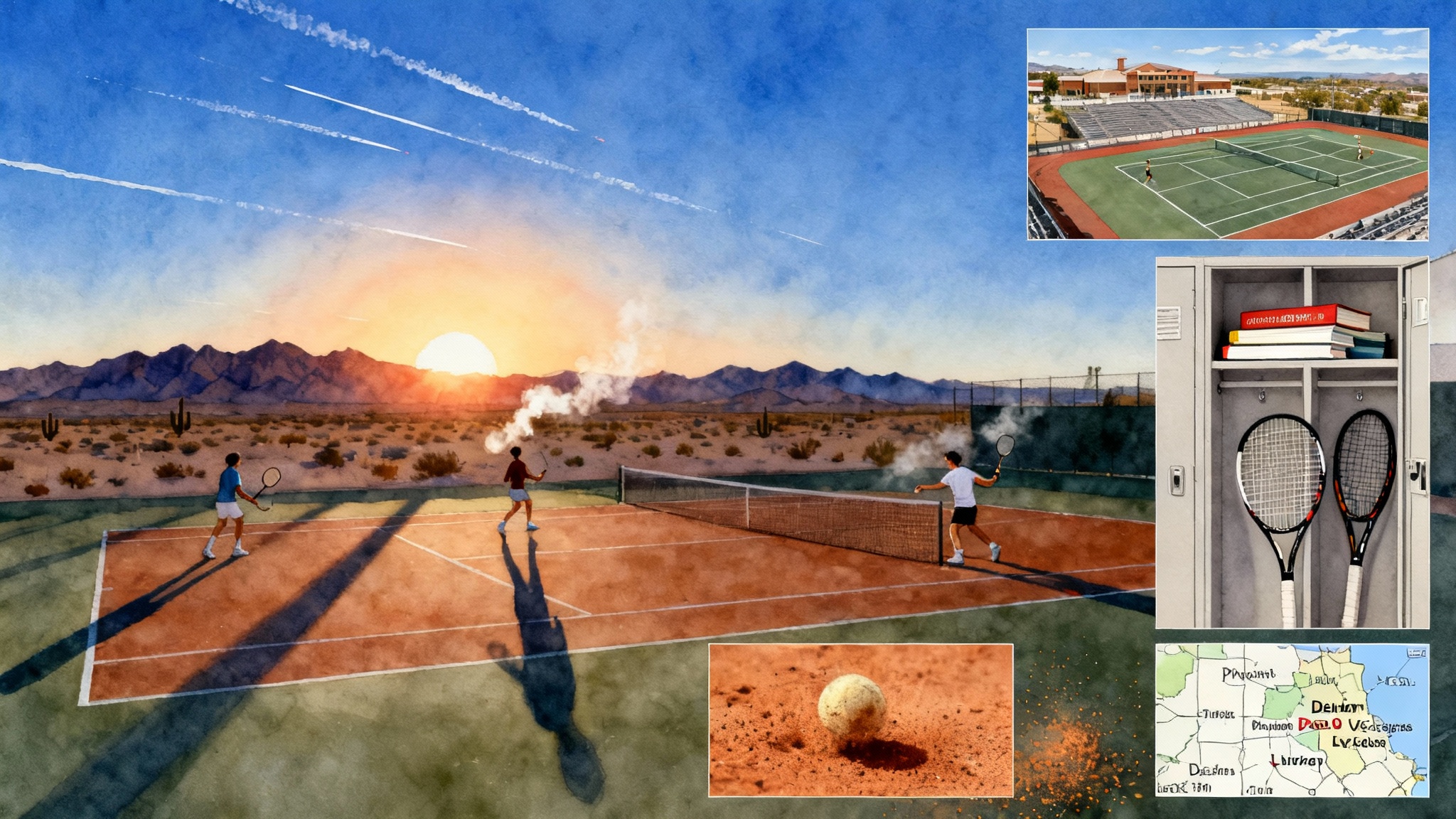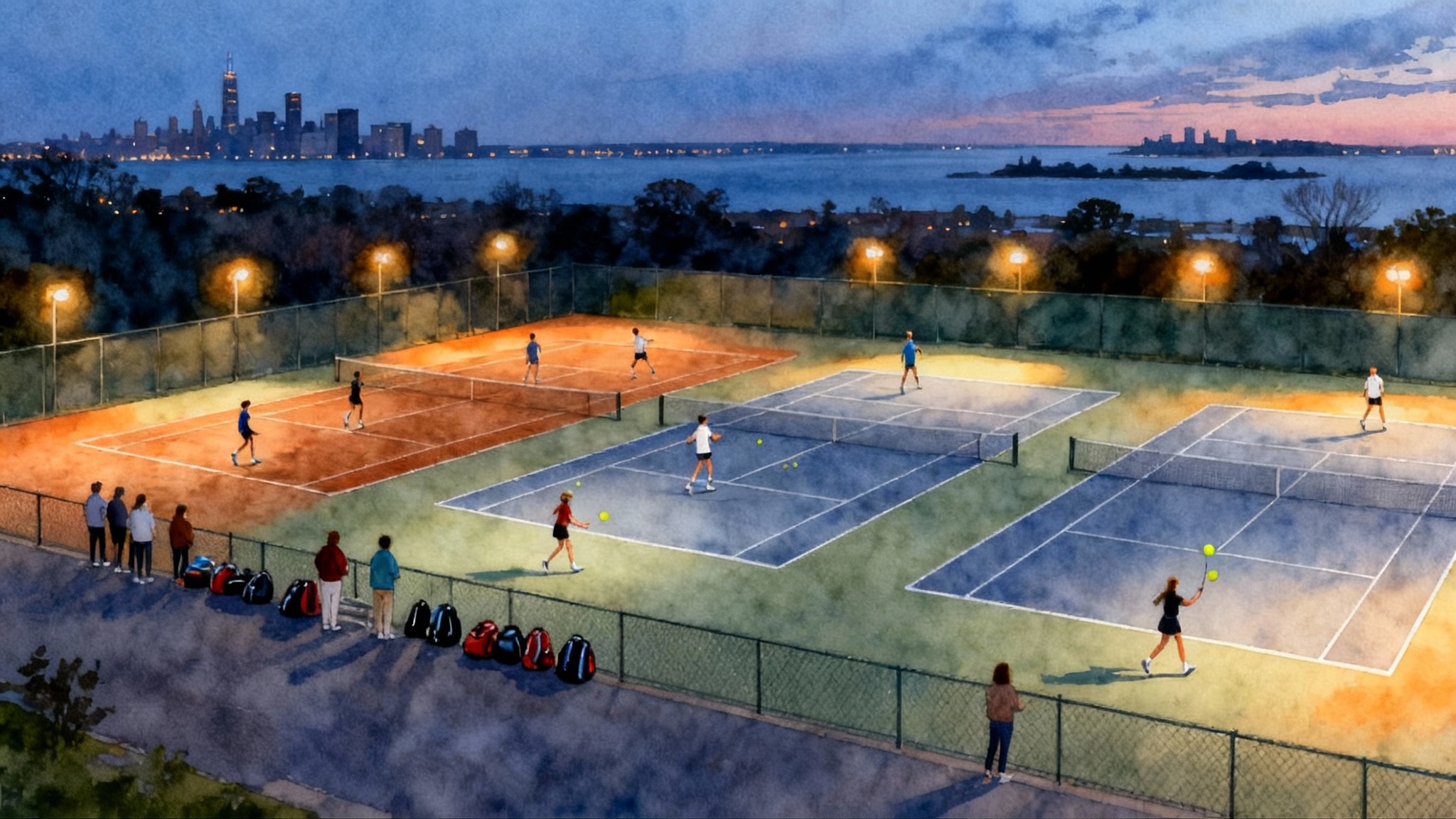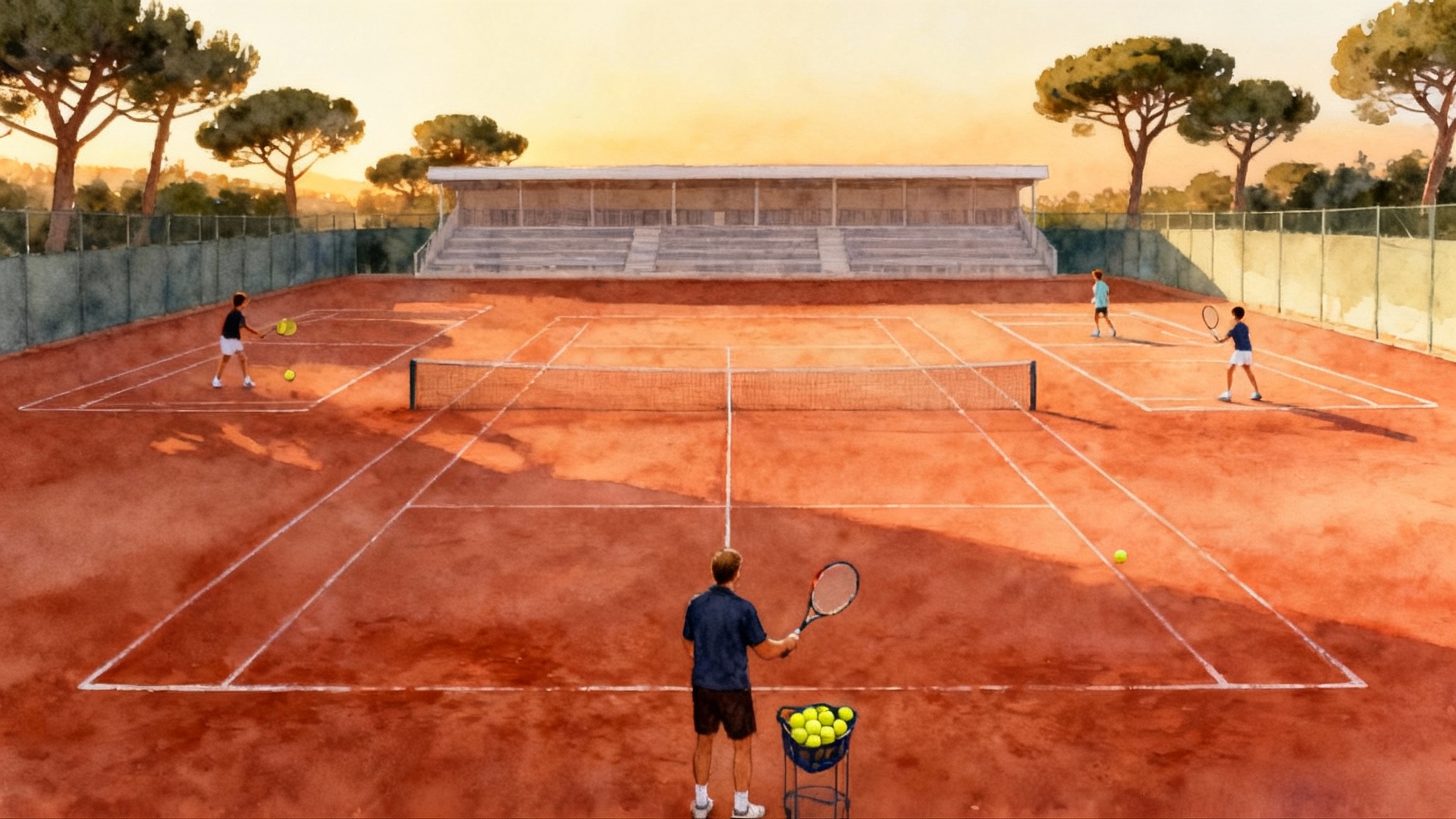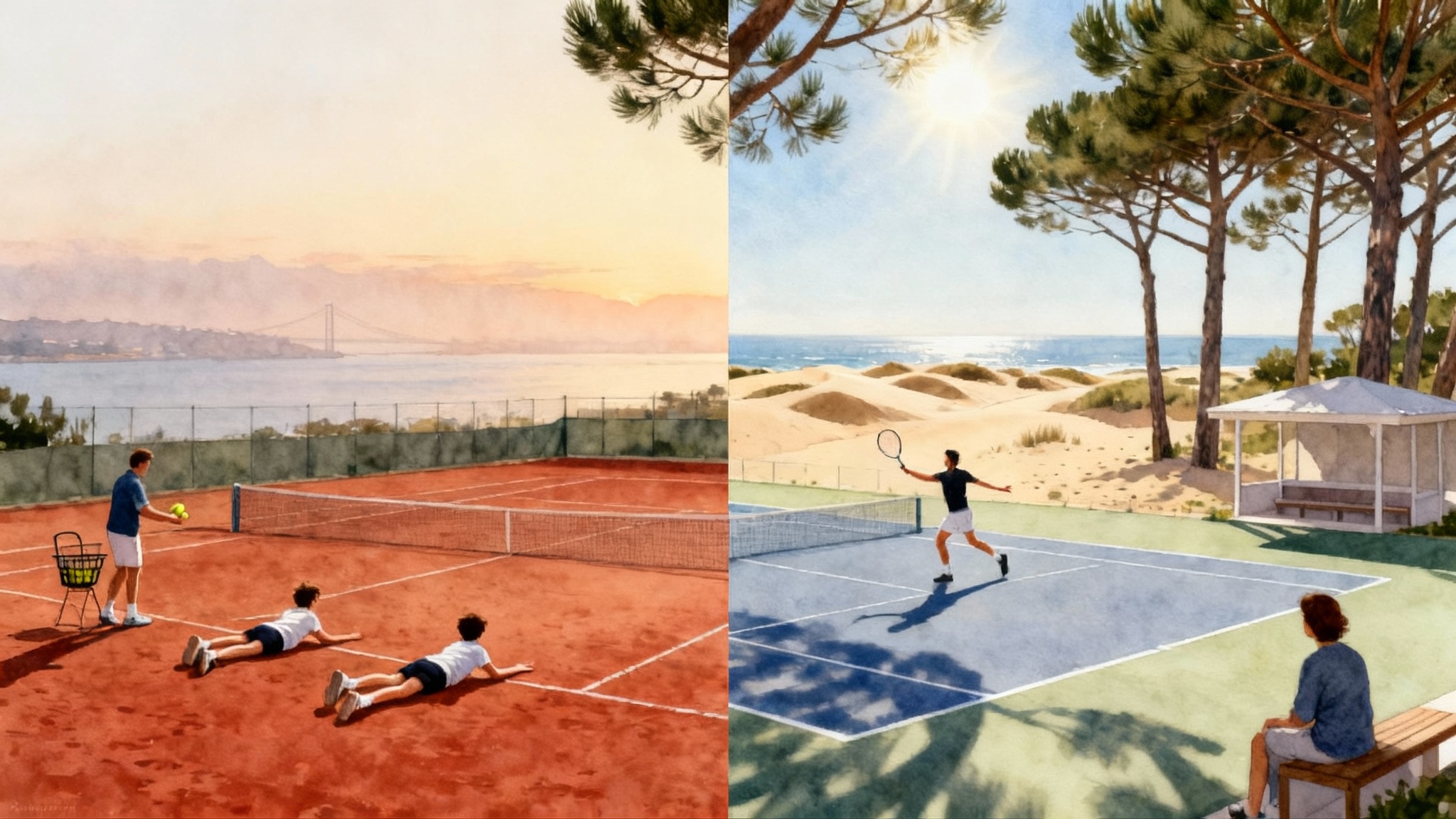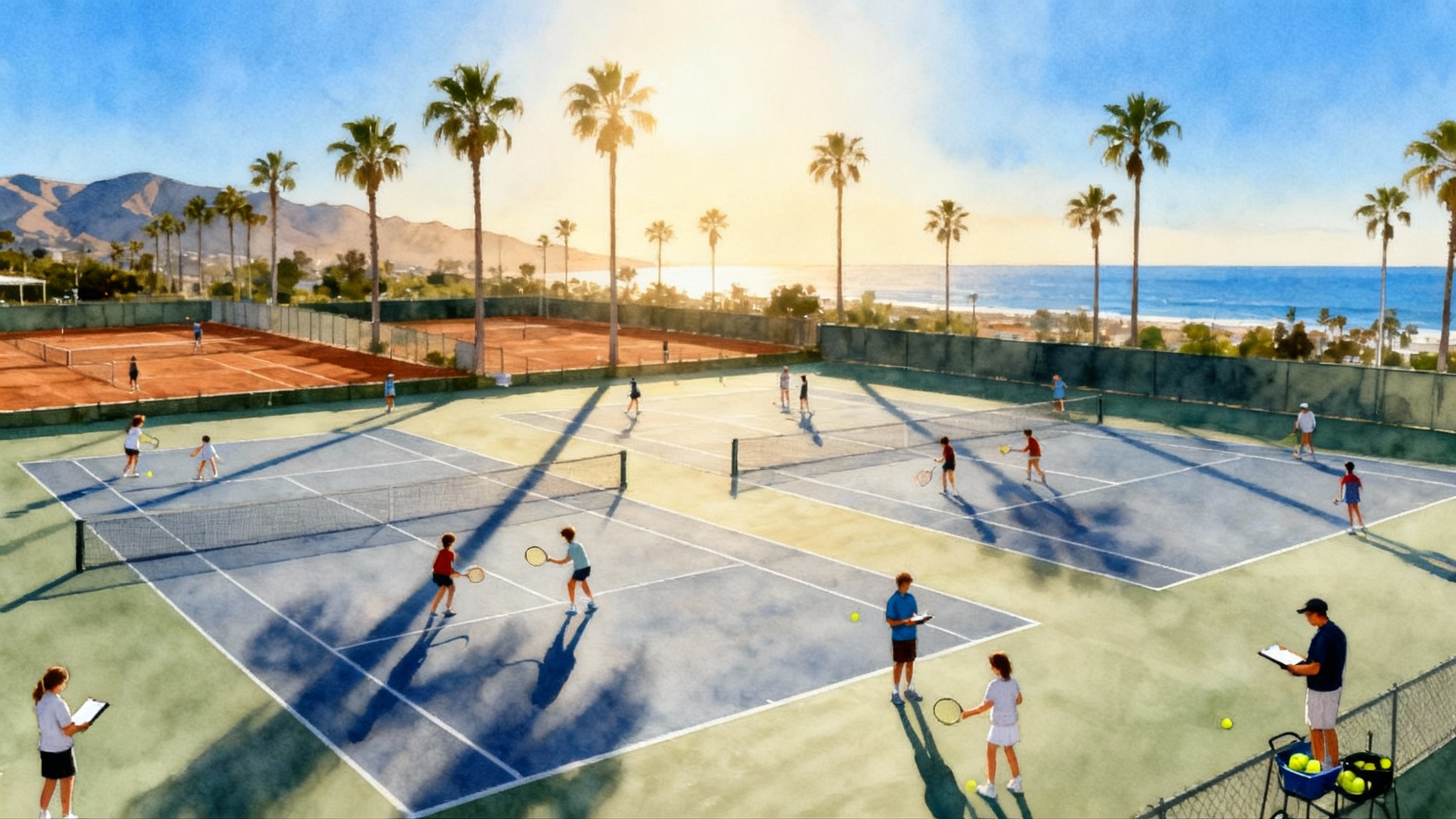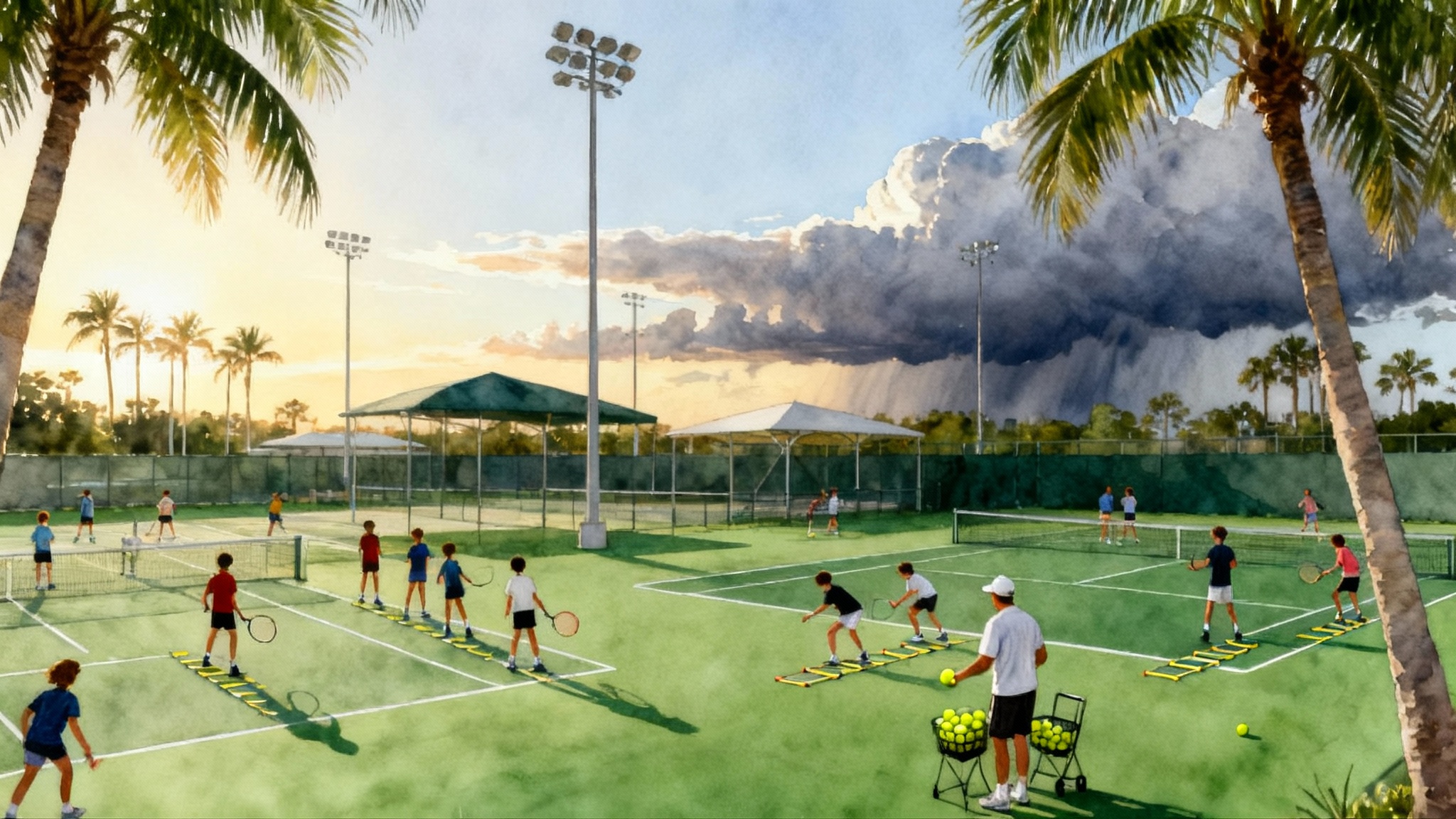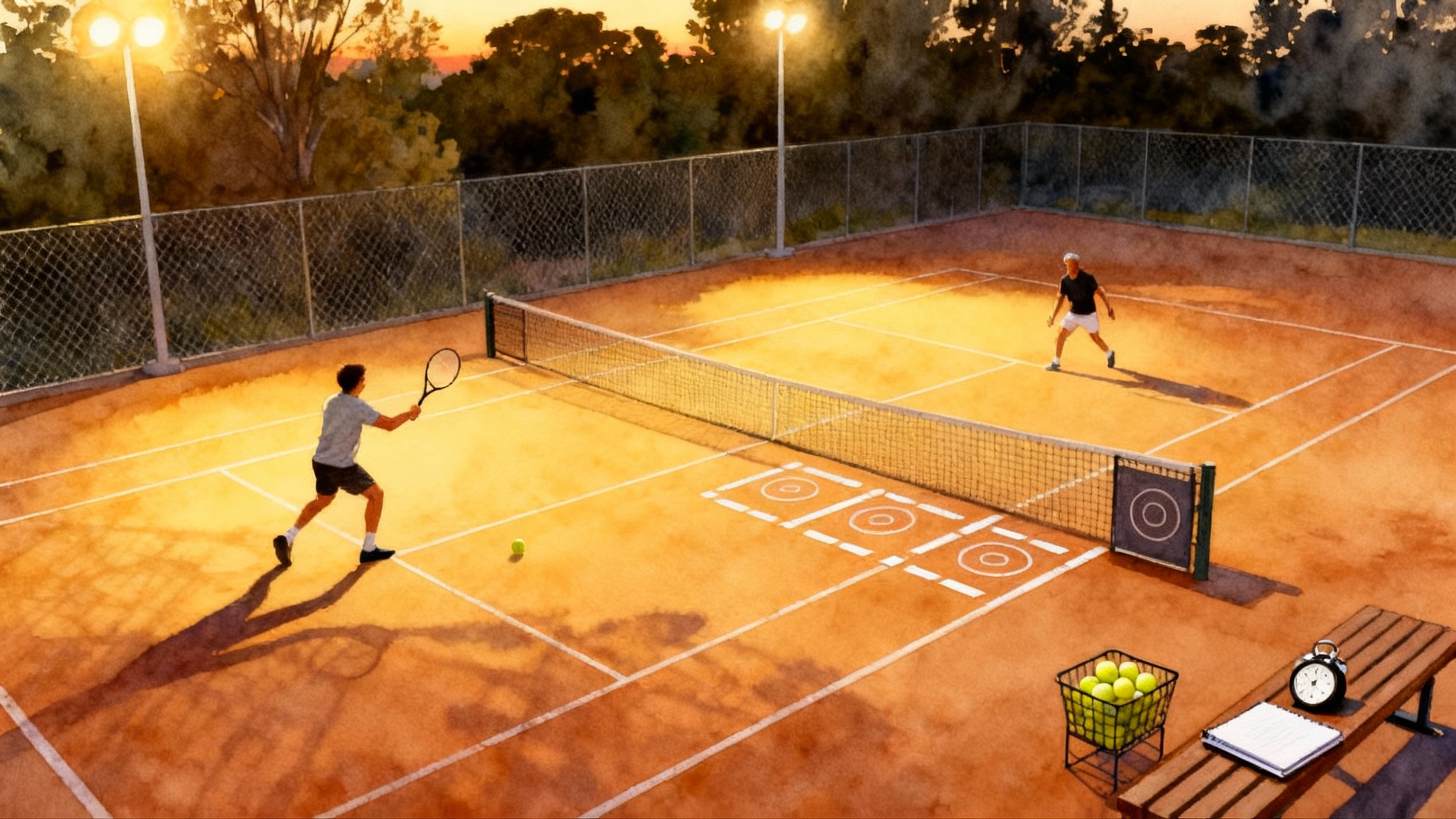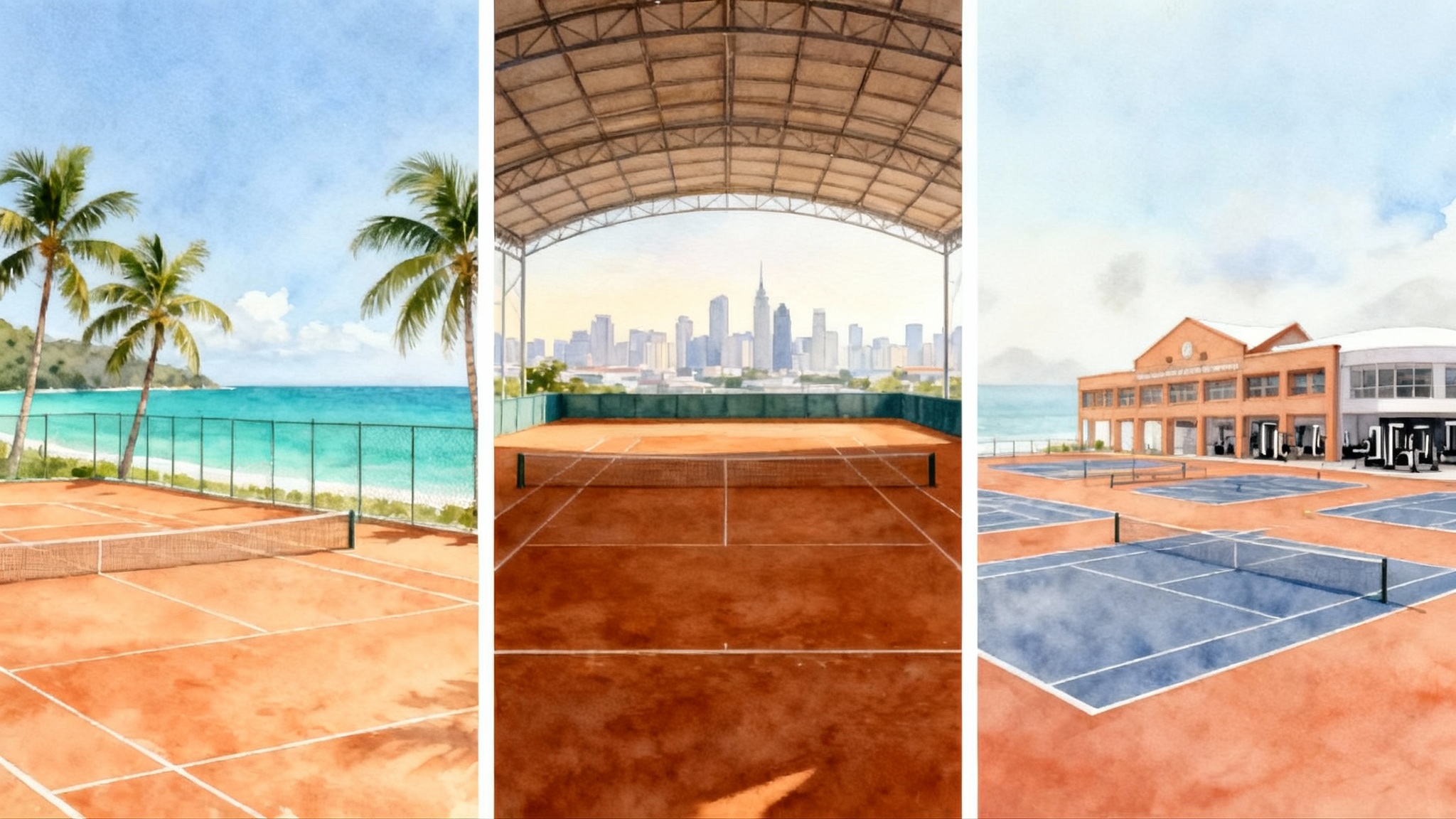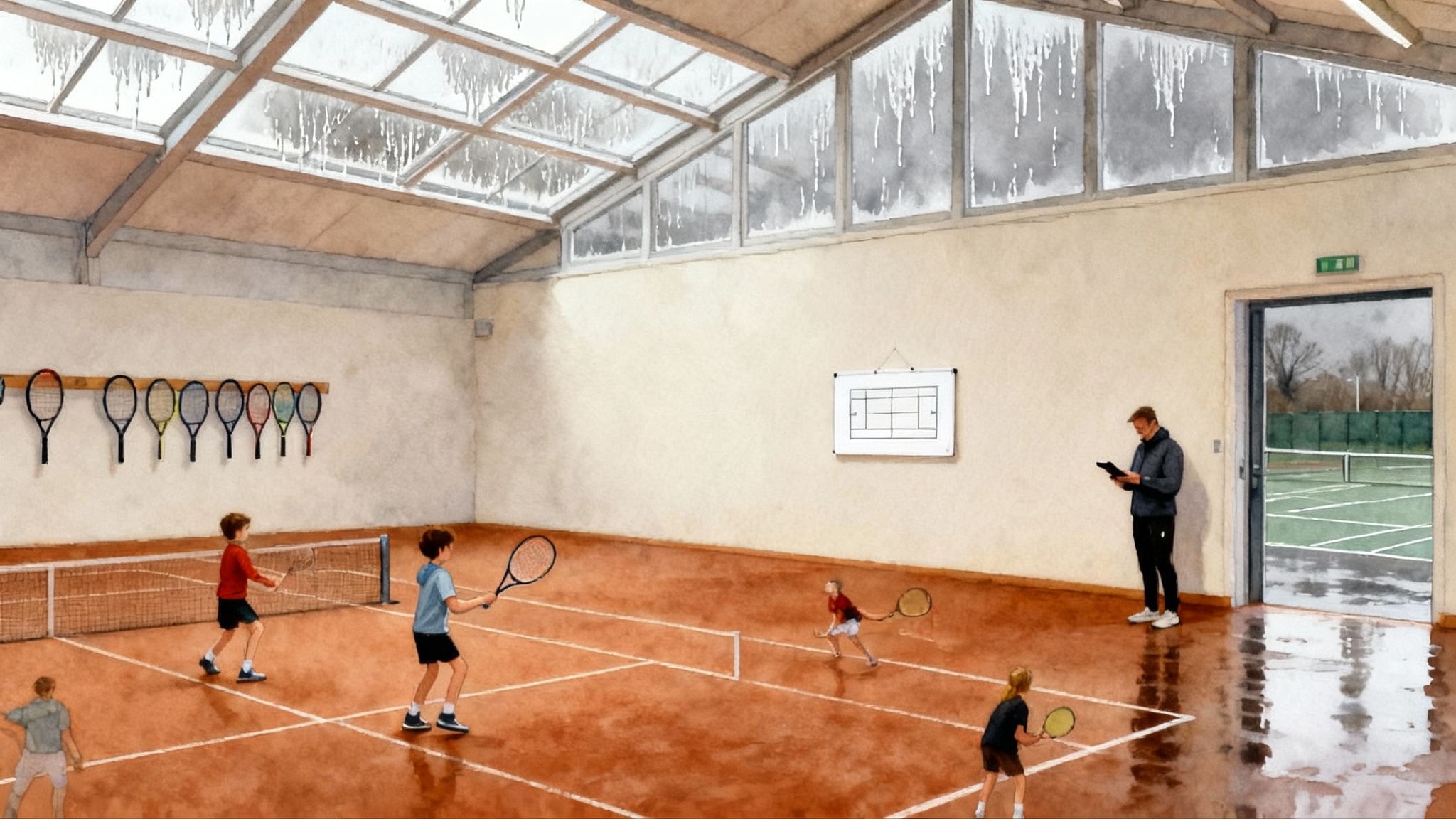Best Canadian Tennis Academies 2025–2026 in Ontario, Quebec, BC
A data-first, parent-focused guide to the top junior tennis academies in Toronto, Ottawa, Montreal, and Vancouver for winter 2025–2026. Compare indoor capacity, coaching ratios, tech, price bands, academics, UTR and WTN, and tournament access.
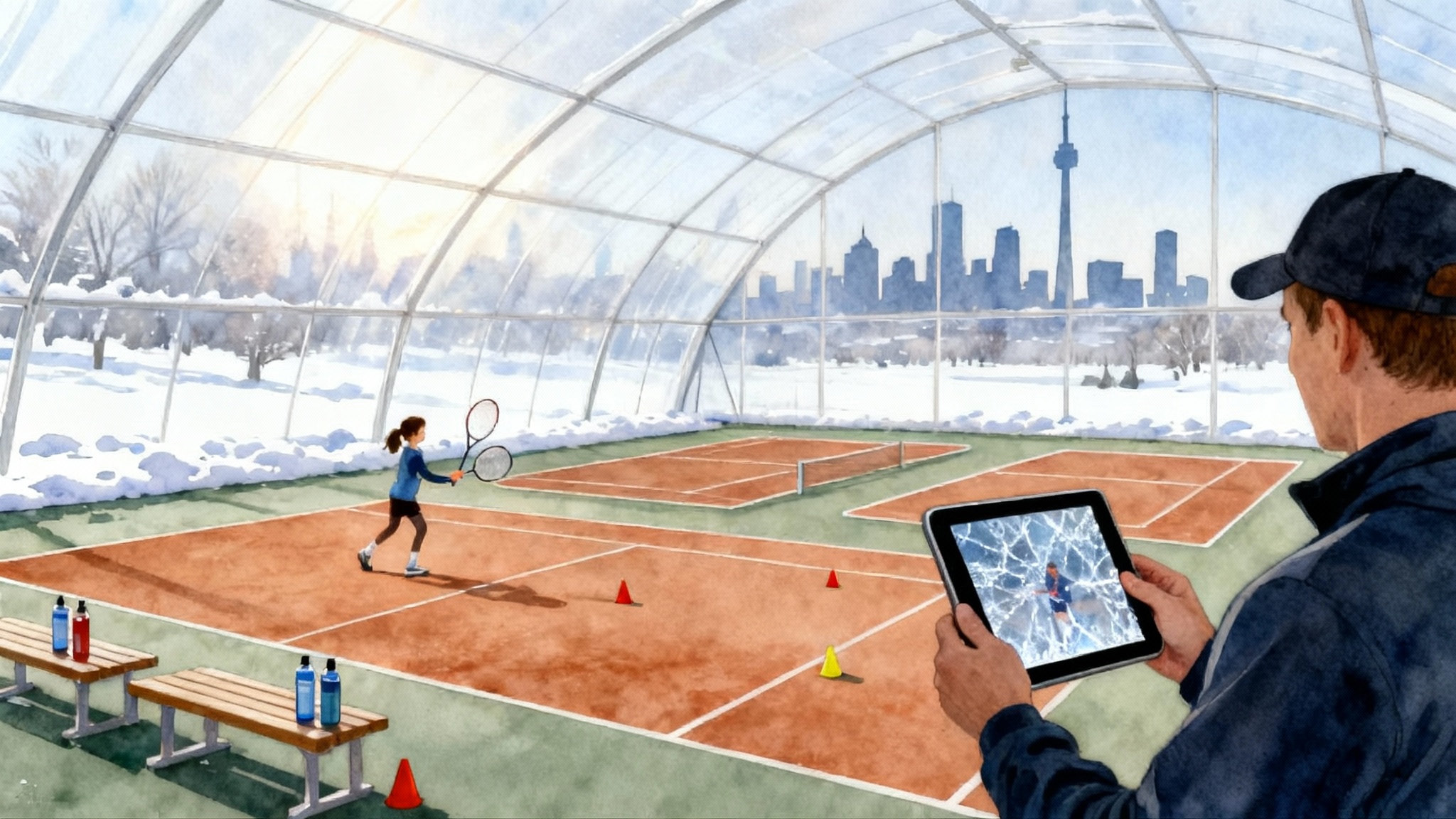
How to read this guide
Winter is when Canadian juniors make the biggest training gains. Indoor time is scarce, schedules lock early, and families commit real money. This guide helps you compare leading junior academies in Toronto, Ottawa, Montreal, and Vancouver using the factors that matter most to parents: indoor court capacity and surfaces, group sizes and coaching ratios, integrated strength and conditioning, technology such as PlaySight or SmartCourt, boarding and academics options, transparent price bands, UTR and WTN progression, and tournament access.
Our approach is practical. We translate each factor into what you can see, ask, and verify during an academy visit. Use the printable decision matrix at the end to match budgets and goals, then book trials before you sign for the winter block. If you are also weighing other regions, compare models in our Best Florida Tennis Academies 2025–2026 Guide and the broader European options in Best UK Junior Tennis Academies 2025–2026.
The scoring model parents can use
A simple weighted model keeps choices honest and apples to apples. You can copy this into a spreadsheet and adjust the weights to match your priorities.
- Indoor capacity and surface mix, 25 percent. Count total indoor courts that juniors can access at peak times, then note surfaces, for example hard, acrylic on concrete, or clay. More courts reduce wait time. Clay lengthens rallies and builds patience, hard courts sharpen first step speed.
- Coaching ratio and curriculum, 25 percent. Ideal high performance groups run between 1 coach to 4 players and 1 coach to 6 players for drilling, and 1 coach to 2 players for serve and return blocks. Ask for a written weekly plan and the progression milestones by month.
- Integrated strength and conditioning, 15 percent. Look for age appropriate speed, mobility, and strength blocks that are planned, not optional add ons. Ask how they screen for growth spurts and how they adjust loads when kids hit a fast growth phase.
- Technology and feedback, 10 percent. Video and match tracking shorten the loop between effort and improvement. Tools like PlaySight or other SmartCourt systems help make practice measurable.
- Academics and family logistics, 10 percent. Winter training lives or dies by commute time and school alignment. Late finish times need next morning plans. If you require academics on site, options are fewer and often cost more.
- Transparent price bands and value, 10 percent. Look for full inclusions, court time, group hours, S and C hours, and clear add ons, private lessons, tournament coaching, travel.
- Tournament access and planning, 5 percent. The program should map events across levels, local, provincial, national, and set target draws for each athlete.
Tip for parents. Ask the academy to score themselves against these weights in front of you. If they refuse or cannot, that is data.
What good looks like at a glance
- Peak winter court access. 3 or more indoor courts available to juniors at after school peaks, split by age bands where possible.
- Consistent coaching faces. The person who does the assessment should teach at least two sessions per week with your child.
- Weekly rhythm. 2 to 4 group tennis sessions, 1 to 2 strength and conditioning sessions, 1 technical block on serve and return, and one match play slot.
- Measured progression. UTR and WTN tracked monthly with match video samples for key situations, second serve under pressure, return plus one, transition point.
- Transparent costs. Monthly or term pricing with a clear parent packet, cancellation rules, travel fees, and optional services listed.
For families new to UTR, Universal Tennis Rating is a single scale for all ages that moves with results. It is useful for month to month tracking of form and level. Read the basics at the official page, How UTR works.
City snapshots and shortlists
The academies below are programs that parents commonly consider in each city. Treat this as a shortlist to visit rather than a final ranking. The right choice depends on commute, age, training volume, and budget.
Toronto, Ontario
- ACE Tennis, Greater Toronto Area. A long standing pathway with performance groups that serve juniors across multiple locations. Strengths often include structured drilling blocks and a clear ladder for younger players moving into higher volume.
- Mayfair Clubs performance pathway. Multi site indoor access supports winter reliability. Families like the consistent weekly rhythm and the ability to add private blocks around group sessions.
- University and stadium based programs. Large facilities in the city host competitive junior programs with multiple courts and winter bubbles. These are worth touring for capacity and event access, especially if your commute allows.
What to probe in Toronto. Because demand is high, confirm peak time court allocation for juniors, ask how many courts run for your age band on Monday to Thursday, and how make up policies work when snow disrupts travel.
Ottawa, Ontario
- National Tennis School, the focus of our case study. A development first approach with clear group progressions, strong emphasis on fundamentals, and a friendly on ramp for players moving from recreational to committed training.
- Multi court club pathways. Ottawa’s indoor footprint is smaller than Toronto’s, which makes peak time allocation critical. Visit and observe a full session before committing.
What to probe in Ottawa. Ask how the academy layers match play into the week, Saturday match blocks versus weekday match play, and whether tournament coaching is available on local weekends.
Montreal, Quebec
- High performance programs based at IGA Stadium. Deep winter capacity, strong practice environments, and proximity to a national level tournament calendar make this a magnet for juniors and families who can manage the commute.
- Club academies on the South Shore and West Island. Families appreciate the community feel and shorter drives, which matter on school nights.
What to probe in Montreal. French or English instruction preferences, travel time to IGA Stadium in winter, and how the academy blends clay and hard court time if both surfaces are available.
Vancouver, British Columbia
- UBC Tennis Centre pathway programs. A hub for juniors with consistent indoor access, a university environment, and a busy weekend match calendar.
- North Shore and West Vancouver club programs. Many deliver strong technical blocks with good coach continuity. Capacity varies by night, so visit during peak hours to see the real flow.
What to probe in Vancouver. Surface mix is almost entirely hard through winter. Ask how wet weather travel impacts attendance, and what the program does to keep intensity high when groups are full.
Price bands you can expect in winter
Pricing varies by city and program design, but the following ranges are common for winter terms in major Canadian cities. These figures are for group pathways with optional add ons.
- Development groups, typically 2 sessions per week, 90 minutes each, often with a short S and C add on. About 250 to 600 Canadian dollars per month.
- Performance groups, 3 to 4 sessions per week, 2 hours each, with scheduled S and C. About 500 to 1,100 Canadian dollars per month.
- High performance blocks, 4 to 6 sessions per week, 2 to 3 hours each, integrated S and C, periodic video analysis, plus supervised match play. About 900 to 1,800 Canadian dollars per month.
- Private lessons. Commonly 70 to 140 Canadian dollars per hour depending on coach seniority and court costs.
- Tournament coaching and travel. Day fees for on site coaching, plus travel share if events are out of town. Clarify in writing before the season starts.
Boarding and full time school integration are rare in Canadian city academies. Families who need this often combine a private school or homestay with a local academy pathway. If boarding is a must have, ask each program for partners they trust.
Coaching ratios and how to test them
Numbers on a brochure do not guarantee reality. Here are simple in person tests parents can run.
- Count. Take a quiet spot by the back fence and count heads for twenty minutes. Write coach to player numbers at the start, middle, and end of the session.
- Listen. A coach to 4 players edit should sound crisp, short cues, names used often, frequent ball contacts. A coach to 8 players edit often sounds like organizing rather than teaching.
- Serve and return block. Ask whether your child will get a weekly small group on serve and return. That is where real gains appear for competitive players.
Technology that actually helps
PlaySight and other SmartCourt systems change behavior because they make patterns visible. The real value is not the highlight reel. It is being able to show a 30 second clip of second serves landing short and the next day watch the ball clear the service line by a foot. Ask if the academy uses tech weekly and how the coach turns clips into a drill the next day.
If you want a second external reference when planning tournaments, use the national calendar to build a three month view, then layer in provincial events. Check Tennis Canada tournament listings to anchor your plan.
UTR and WTN progression benchmarks
The point of winter training is to convert hours into reliable patterns that move match results. A simple way to visualize progress uses three lenses.
- Stroke stability. Number of neutral rally balls you can make under pressure, not feed. Targets by age vary, but a useful cue is whether your child can play a 10 ball neutral rally on demand from the baseline with intent.
- Serve and return. Second serve that lands deep and a return that clears the service line with shape. Improvement here lifts UTR fast because these two touches start every point.
- Patterns to finish. Approach and volley shape, forehand plus one, backhand depth to neutralize. Video helps make this visible for players.
Good academies write goals that sound like these, and then tie them to match data. A six month target might be two UTR increments if the player is competing weekly and training three or more times per week. Faster or slower jumps are normal depending on growth, experience, and health.
Tournament access and planning
Tournament density matters because match reps drive learning. Parents should ask for a calendar that includes local match play nights, sanctioned events in the city, and a travel plan for bigger draws. In Toronto and Montreal, competitive weekends stack up quickly. In Ottawa and Vancouver, families often travel to the nearest big city a few times each term. Ask for the coach on call plan for event weekends and the communication channel for draws and schedules.
Case study, National Tennis School, Ottawa
Parents often ask what a development first pathway looks like in practice. National Tennis School in Ottawa is a helpful example because it shows how to move a motivated player from general skills to competitive habits within a single winter.
- Assessment. The process starts with a 60 to 90 minute on court look that covers grips, contact height, footwork, and serve action. Parents receive a short written summary with two technical priorities and two competitive habits to build, for example a split step on every return and a deep second serve target.
- Weekly plan. A typical rhythm for a 12 to 14 year old is three group sessions of 90 to 120 minutes, one strength and conditioning block, and supervised match play on the weekend. Serve and return get a dedicated 30 to 45 minute slot once per week.
- Coaching ratios. Small group drilling blocks aim for 1 coach to 4 to 6 players. Serve and return sessions run tighter, around 1 coach to 2 to 3 players. Parents can observe and confirm.
- Technology. Video is used as needed to shorten the feedback loop. The emphasis is on capturing one or two rally patterns or a serving target, then turning that into a drill the next day rather than archiving hours of footage.
- Parent communication. Families receive a short monthly check in that ties training themes to match clips or stats, for example depth of second serve, first ball errors on the return, and number of transition points attempted.
- Progress. A realistic six month outcome for a committed player training three to four times per week and competing twice per month is a visible improvement in serve depth and first ball reliability, with a steady rise in competitive consistency. UTR and WTN movement follows as match habits stick.
What to ask NTS on your visit. How do group placements change through winter, how are make ups handled when snow hits, and what is the plan for tournament coaching on key weekends. Parents also ask about growth spurt adjustments and how strength and conditioning is customized when kids jump in height mid season.
A printable decision matrix
Print this page and take it to each academy visit. Fill one row per program. Score 1 to 5 in each column, 5 is strongest. Multiply by the weight to get a weighted score. Add notes in the last column.
| Program | City | Indoor courts available at peak | Surface mix | Coaching ratio | S and C integration | Tech usage | Academics or logistics fit | Price transparency | Tournament access | Weighted score | Notes |
|---|---|---|---|---|---|---|---|---|---|---|---|
| 1-5 | 1-5 | 1-5 | 1-5 | 1-5 | 1-5 | 1-5 | 1-5 | 0-100 |
Weights to apply. Indoor capacity and surface mix 25, Coaching ratio 25, S and C 15, Tech 10, Academics or logistics 10, Price transparency 10, Tournament access 5.
If you prefer a checklist style for a quick screen, use this one.
- Commute under 35 minutes on a weeknight from school or home.
- At least 3 indoor courts available for your age band during peak hours.
- Serve and return block appears on the weekly plan.
- Integrated S and C with growth spurt screening.
- Video or SmartCourt used weekly for one targeted clip and drill.
- Transparent monthly price with clear add ons for privates and tournaments.
- Calendar with at least two suitable tournaments per month.
How to run a two visit test before you commit
Visit 1, watch a session. Focus on energy and the ratio the coaches can sustain. Ask for the written weekly plan and a short note on how your child would be placed. Visit 2, do a trial session. Ask your child one question after, what did you learn that you can try tomorrow. The best programs generate a clear, simple answer.
City specific realities to plan around
- Toronto. Capacity crunch. Decide early, keep an eye on make up policies, and book private lessons in advance if you want them in peak hours.
- Ottawa. Fewer indoor courts per capita than Toronto. Lock sessions that you can actually attend on snow days and make match play a habit to boost learning between practices.
- Montreal. Deep competition pool with bigger draws. Families should plan for traffic and parking winter realities around IGA Stadium and balance that with closer club options.
- Vancouver. Travel can stretch commutes in wet months. Keep consistency by picking a program that your family can reach in all weather.
Final tips on value and fit
- Ask for a named coach. Your child should know who will run most of their sessions, not just the head of program.
- Look for a plan on paper. A one page outline that shows weekly blocks, goals by month, and how events fit into training.
- Confirm the money details. What happens if a coach changes, how are missed sessions handled, what is included in your term fee, and how are tournament days billed.
- Expect small, steady gains. The best academies make three things reliable by spring, deeper second serves, cleaner first two shots after the return, and one pattern to finish at the net.
Conclusion, the smart way to choose for winter 2025–2026
The best academy is the one that your child can attend consistently, that measures what matters, and that turns those measures into a simple weekly plan. Use the weights, print the matrix, and visit two or three programs in your city before you commit. Toronto, Ottawa, Montreal, and Vancouver all have pathways that can move a junior forward. The difference is usually not magic. It is court time you can count on, a coach who stays present, and a plan that survives winter.
